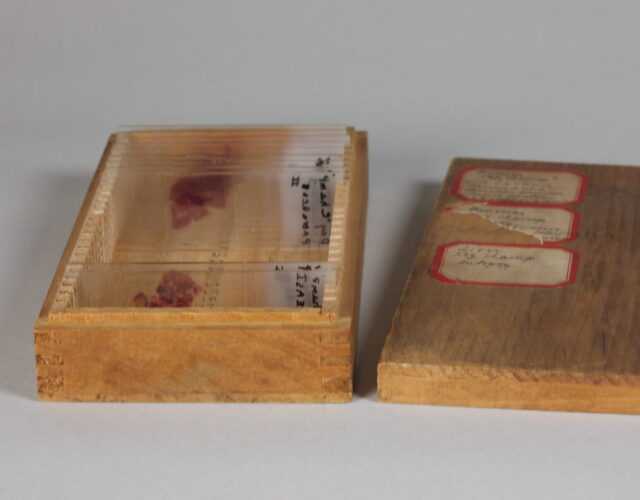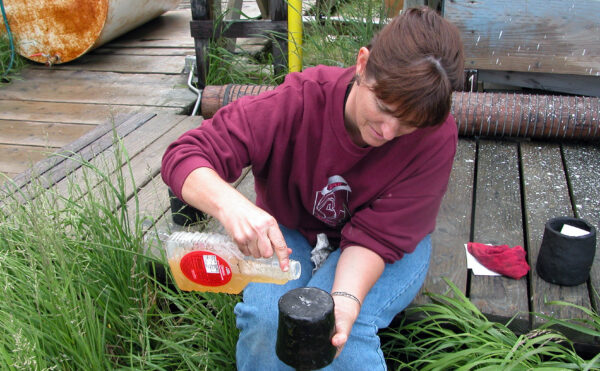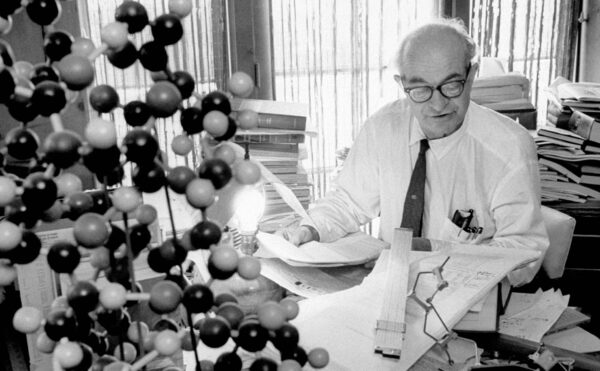Thomas Willis pensively sipped from his glass. It was sweet, even a little delicious. In 1674 the Oxford University physician was far from the first doctor to taste urine, but he was the first Western doctor we know of to connect the sweetness of urine to the condition of its owner, a person suffering the effects of diabetes. Willis was baffled by his findings and recorded his experience in Pharmaceutice rationalis: “But why that it is wonderfully sweet like sugar or honey, this difficulty is worthy of explanation.” Willis never figured out why his specimen was sweet, but his observations helped future researchers isolate the cause of diabetes.
Diabetes impairs the body’s ability to properly regulate the amount of sugar, or glucose, in the blood and can lead to dehydration (from frequent urination), malnutrition, seizures, kidney failure, and ultimately death. Today diabetes is no longer a death sentence, but even with vigilant monitoring of blood-sugar levels and widely available artificial insulin, people with the disease still die prematurely. The story of how we came to understand diabetes stretches from ancient papyrus to modern smartphones.
The first recorded treatment for “excessive urination” can be found in the Ebers papyrus, written in Egypt around 1550 BCE and named for its discoverer, German Egyptologist Georg Ebers. The papyrus suggests downing “a measuring glass filled with Water from the Bird pond, Elderberry, Fibres of the asit plant, Fresh Milk, Beer-Swill, Flower of the Cucumber, and Green Dates.” Egyptian physicians suspected that there was some connection between what people ate and the symptoms we now associate with diabetes, but none of their treatments would have been effective.
It took another 1,500 years before Aretaeus, a Greek-speaking physician who lived in the 1st century CE, coined the term diabetes, the Greek word for “siphon.” Aretaeus described diabetes as “a melting down of the flesh and limbs into urine,” which was siphoned out of the body. To the east, Chinese physicians described the disease similarly, labeling it xiao ke (wasting and thirsting), a term still used today. In South Asia both the Sushruta Samhita and Charaka Samhita, foundational texts of traditional Indian medicine (Ayurveda), called the disease madhumeha, Sanskrit for “honey urine.”
Skip ahead to Thomas Willis, who rediscovered the connection between diabetes and sweetness by conducting his taste test. He renamed the disease diabetes mellitus; mellitus is Greek for “like honey.” Willis pondered why it was sweet, but he did not suspect that the urine contained sugar. A century later, building on Willis’s work, English doctor Matthew Dobson proved people with diabetes were, in fact, urinating sugar. In an experiment published in 1776 in the London journal Medical Observations and Inquiries, Dobson evaporated a patient’s urine, leaving a white, granulated powder that smelled and tasted like brown sugar. He also found sugar in the patient’s blood and concluded that the condition was caused by “imperfect digestion and assimilation.” With that information Dobson attempted to treat a diabetic patient with a variety of remedies—including rhubarb, opium, and cantharidin, a toxin produced by a type of beetle—he hoped would help the man better digest his meals. Dobson’s patient did not improve and gave up the treatments after a few months.
Dobson’s treatments may have been a bust, but his isolation of sugar from bodily fluids gave doctors a better understanding of the disease. Researchers knew that kidneys cleaned blood by filtering out unwanted substances and extra water as urine. And they vaguely understood that people with diabetes had too much sugar in their blood, which caused their kidneys to work overtime, resulting in dehydration and extreme thirst. But not until the physiologist Oskar Minkowski removed a dog’s pancreas at the University of Strasbourg in 1889 did the medical community learn which organ regulated blood sugar. Minkowski, while trying to determine the role the pancreas played in fat absorption, was surprised to find that without a pancreas his research subject developed diabetes. He published his results later that year, but it took another 30 years before doctors understood the relationship between the pancreas and diabetes.
In the meantime physicians were trying to help the sick. In 1915 two American doctors, Frederick Allen and Elliott Joslin, championed a treatment that would keep people with diabetes alive: the “starvation diet.” They theorized that if they denied their patients almost all carbohydrates, thus severely limiting the amount of glucose in the patients’ blood, they would prevent the effects of diabetes. The diet did seem to stave off symptoms, but patients developed a host of other medical problems that came with such a deficient diet, and more than a few starved to death. Others lived, but the choice between near-constant hunger and the effects of diabetes was not an easy one. Allen and Joslin’s treatment was not an answer, and the cause of diabetes (and the key to treating it) remained a mystery.
Five years later doctors found what appeared to be a truly effective treatment. In 1921 a Canadian physician named Frederick Banting declared he could isolate and extract a substance from dogs’ pancreases and use it to regulate blood sugar. Banting and his assistant, Charles Best, ground up the pancreases and used alcohol to separate out the unwanted parts. After they injected their concoction into diabetic dogs, the animals’ symptoms disappeared, at least temporarily. Routine injections kept one dog, Marjorie, alive for 70 days. Banting named the substance insulin and extracted it from the pancreases of dogs and cows until they had enough purified to give to a human. In 1922, 14-year-old Leonard Thompson was the first person to be treated with insulin. Thompson was saved from imminent death, but how would there be enough insulin for all the other people suffering from diabetes?
Insulin tells our bodies’ cells how much glucose to absorb. It is part of the endocrine system’s collection of regulating chemicals, such as testosterone, that move through our bloodstream. We can survive with little to no testosterone, but without insulin our cells cannot take in glucose. Without insulin we would eventually die from dehydration or starvation.
We can survive with little to no testosterone, but without insulin our cells cannot take in glucose.
Other laboratories stepped up to develop more efficient methods of extracting insulin, including the lab at Washington University in St. Louis where Hungarian American biochemist Michael Somogyi worked. Somogyi also sourced insulin from dogs and used the animals to study the effects of diabetes. Slides containing samples from two of those dogs reside in worn wooden boxes in CHF’s collections. Scrawled on the side of one box is a dog’s name: Champ. Modeling his work on Banting’s experiments, Somogyi removed Champ’s pancreas and waited to see what would happen.
Somogyi, then 39 years old, monitored Champ as the dog drank enormous amounts of water and urinated excessively. Champ gradually grew too weak to walk as his blood became overloaded with sugar. Somogyi then used Champ’s own pancreas to extract insulin, injected it directly into Champ’s bloodstream, and watched the dog’s symptoms disappear. Somogyi processed more canine insulin, some of which was used in 1922 to treat a child’s diabetes, a first in the United States.
Within a year Eli Lilly and Company was mass-producing insulin using pig and cow pancreases taken from slaughterhouses and shipping the drug around the world. According to the magazine Diabetes Forecast, it took nearly two tons of pig parts to produce 8 ounces of purified insulin. Urine testing kits were developed, allowing people to more or less accurately measure their glucose levels at home. But as insulin extended the lives of people with the disease, a range of other diabetes-related problems cropped up, including blindness, heart disease, gangrene, stroke, and kidney failure. Stranger still, some people responded to insulin better than others.
Not until 1959 did two researchers, Solomon Berson and Rosalyn Yalow, demonstrate the existence of two main types of diabetes. Type 1 diabetes, which is relatively rare, occurs when the body can’t produce its own insulin. Type 2 afflicts roughly 95% of people with diabetes. Although many sufferers of type 2 diabetes can produce enough insulin, their cells ignore the endocrine system’s signals to absorb glucose. Mitchell Lazar, an endocrinologist at the University of Pennsylvania, says that the current treatment for type 2 diabetes—insulin injections when blood-sugar readings deviate from safe levels—works about as well as yelling into a malfunctioning telephone receiver. Increasing the volume to compensate for faulty hardware is a stopgap, not a solution. In that same way, injected insulin helps people with type 2 diabetes compensate for their resistance but doesn’t begin to address the root of the problem.
By 2001 Lazar’s group had isolated one part of that problem: they discovered resistin, a hormone produced by immune cells called macro-phages. As its name implies, resistin increases the body’s resistance to insulin. How resistin operates is not entirely clear, but essentially it blocks the signals insulin sends to our cells telling them to absorb glucose. Because resistin is produced by our immune system, more of it shows up in people who have inflammatory diseases, such as lupus and type 2 diabetes. Obesity, which often accompanies type 2 diabetes, compounds the problem; obesity causes inflammation, meaning even more resistin is produced. The combination of diabetes and obesity creates a vicious cycle that exacerbates a diabetic patient’s condition.
But there is more work to be done. Even if scientists prevented macrophages from producing resistin, Lazar says they still could not cure type 2 diabetes, given the many other chemicals and hormones that contribute to the disease.
Still, treatment for diabetes has come a long way. Today most insulin comes from bacteria rather than mammals, thanks to techniques developed in the late 1970s that splice the human gene that produces insulin into the DNA of a bacteria. (Among other things, this advance made the drug safer for people allergic to animal insulin.) Scientists also have a better understanding of the need for different amounts of insulin for different situations: fast-acting insulin is good for right after a meal, when blood sugar is likely to spike; slow-acting insulin is better for maintaining a low blood-sugar level between meals.
Recent improvements in technology have given people more tools to monitor their disease. Some glucometers plug directly into a smartphone, which allows users to track blood-sugar levels with an app. Charting glucose levels over time helps people with diabetes plan ahead, and the app reminds them when to check their blood sugar.
In other ways old “technology” is making a comeback in the treatment of diabetes. In Elle and Coach, Stefany Shaheen describes her daughter Elle’s struggle with type 1 diabetes. Coach is a Labrador retriever trained to smell changes in Elle’s blood sugar. When levels get too high, the dog nudges her until she takes a dose of insulin. Dogs like Champ once died to provide insulin to the world, but today dogs like Coach help people with diabetes live relatively normal lives.
In the printed version of this article, we gave the incorrect treatment for low blood-sugar levels. We regret the error.




